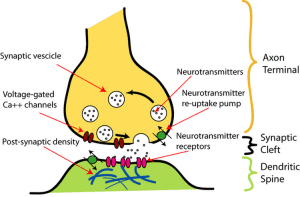For some, psychiatric medications are the difference between life and death. For others, they’re the difference between life and chaos. There’s a lot at stake for a whole lot of people, and that’s why following the medication pipeline is crucial.
There are currently five medications of note in development for the treatment of schizophrenia. And those trying to live with it richly deserve the attention.
We’ll kick things off like we did in part one…
It’s believed that one in five adult Americans use psychiatric medications. The United Kingdom numbers are similar.
Now, there are those who claim psych meds are not only useless, they’re harmful. But for the sake of folks who believe in – and rely upon – them, as well as continuing the quest for improved efficacy and fewer side effects, we need to do this.
As you can imagine, we’re dealing with a ton of info and there’s no way to do it justice in one piece.
That’s why we handled generalized anxiety disorder, major depressive disorder, and post-traumatic stress disorder in part one. And we’ll review attention-deficit/hyperactivity disorder and schizophrenia here.
As long as we’re on the subject, if you’re interested in participating in a US Food and Drug Administration (FDA) clinical trial for a drug in development anywhere in the world, hit the database. The UK offers the same at ScanMedicine.
Let’s – get – busy…
The psychiatric medication pipeline: The latest
I’ve tried to make the info you’re about to read simple and brief, but I’ll tell you up front, the schizophrenia details are intense.
If you want every minute detail, there are links to my sources at the end.
Attention-deficit/hyperactivity disorder (ADHD)
Two meds – stimulants – are the most effective medication treatments for ADHD: methylphenidate (Ritalin, Concerta, others) used since the 1960s and amphetamine (Adderall, Evekeo, others) used since the 1970s.
There are two other classes of medication available: presynaptic α2-adrenergic receptor agonists – clonidine extended release (Kapvay), guanfacine extended release (Intuniv), and primary norepinephrine reuptake inhibitors (NRIs) – atomoxetine (Strattera) and viloxazine extended release (Qelbree).
Choices are a good thing. As effective as stimulants may be, they aren’t for everyone. Furthermore, though two of the non-stimulants are NRIs, they have very different secondary mechanisms of action, as well as pharmacokinetics.
Centanafadine
Centanafadine is a novel norepinephrine, dopamine, serotonin reuptake inhibitor – “triple reuptake inhibitor.”
The most common adverse events in the phase 3 studies, which presented in fewer than 7% of cases, were headache and decreased appetite.
Centanafadine is in the final stages of development by Osaka Pharmaceutical. Completed phase 3 studies indicate it may soon be joining the ADHD medication family.
Schizophrenia
There are currently five medications of note in development for the treatment of schizophrenia. And those trying to live with it richly deserve the attention.
Schizophrenia is an ultra-complicated illness, and that makes explaining the action of its meds in development difficult.
But we can do this, so let’s go…
Acetylcholine
Interesting: in the evolutionary history of the nervous system, it’s believed that acetylcholine (ACh) is our original neurotransmitter. It’s also the primary neurotransmitter of our parasympathetic nervous system, which orchestrates “rest and digest.”
Neuron synapse basics
Now we’ll get all “sciencey.” There are two kinds of neuron receptors for ACh: nicotinic and muscarinic. Both have been considered targets for drug development. Here, we’re going to focus upon muscarinic receptors (mAChRs).
Muscaniric M1 ACh receptor agonism has been associated with improvement in cognition, attention, and memory consolidation.
Key here is the fact that M4 receptors are selectively expressed in the striatum, the part of the brain that is believed to be the source of psychosis due to an imbalance of dopamine and ACh.
The molecule xanomeline is a muscarinic acetylcholine receptor agonist with selectivity (binding preference) at M1 and M4 receptors.
When the M4 receptors are agonized by xanomeline, the flow of ACh into a synapse is inhibited, which is believed to ultimately result in a decrease of dopamine in the striatum – which exacerbates psychosis.
So it’s about the preferred method of managing dopamine-2 receptors at the source, instead of having to chemically block them in synapse.
KarXT
Karuna Therapeutics hypothesized and clinically confirmed that by adding the ion trospium – a well-established mAChR antagonist – as a combination molecule with xanomeline, the central benefits of mAChRs agonism could be maintained while the trospium would dampen down the adverse effects by antagonizing the peripheral mAChRs.
The resulting combination drug xanomeline-trospium was compared with placebo in a phase 2 trial. Results showed a significant improvement. The phase 2 results were recently replicated by two phase 3 trials.
The most common adverse effects included constipation, nausea, dry mouth, indigestion, and vomiting.
In September 2023, Karuna Therapeutics submitted a new drug application to the FDA for KarXT for the treatment of schizophrenia in adults. It was accepted.
The possible FDA approval of KarXT later this year would be huge. See, all current FDA-approved antipsychotics share the property of antagonizing postsynaptic dopamine-2 receptors.
With that come awful adverse effects: movement disorders, elevation of prolactin, cognitive dulling, and emotional blunting.
Yes, KarXT can be a game changer.
Emraclidine
Cerevel Therapeutics is developing its own muscarinic receptor agonist ifor the treatment of schizophrenia. Emraclidine is highly specific for M4 receptors.
In a recent phase 1b trial, emraclidine produced clinically meaningful and statistically significant improvement. Two phase 2 trials are currently underway.
Iclepertin
Schizophrenia has three symptom types…
- Positive: hallucinations, delusions, confused thinking/disorganized speech, trouble concentrating
- Negatine: lack of pleasure, trouble with speech, flattening, social withdrawal, difficulty with activities of daily life
- Cognitive: effects learning, storing, using information – working memory, paying attention, organizing thoughts, making decisions. They’re referred to as cognitive impairments associated with schizophrenia (CIAS)
Sadly, there are no FDA-approved meds to treat CIAS. Boehinger Ingelheim aims to remedy this injustice with the nootropic iclepertin.
Tell you what, this one is super-complicated, so we’ll run with the bare minimum. Schizophrenia is characterized by abnormalities in glutamatergic pathways related to NMDA receptor hypo-function..
Inhibition of glycine transporter-1 (GlyT1) on the presynaptic membrane or astrocytes is hypothesized to increase glycine levels within the synapse. The NMDA receptor function may be enhanced by increasing levels of its co-agonist, glycine, within the synaptic cleft, which may lead to improvements in cognitive function.
Iclepertin is a GlyT1 inhibitor.
A phase 2 trial demonstrated significant cognitive improvement. Iclepertin was found to be safe and well tolerated.
Three multinational phase 3 trials are underway.
Roluperidone
Reducing the negative symptoms of schizophrenia (reference above) remains a massive unmet need.
Roluperidone, being developed by Minerva Neurosciences, is a novel molecule that has antagonism at the 5-HT2A (serotonin), sigma-2, and a-1A adrenergic receptors. It was specifically designed to avoid activity at dopamine receptors – to reduce or eliminate the disabling adverse effects we reviewed earlier.
Roluperidone has been investigated in two trials, both demonstrating an improvement vs. placebo. Two extension studies showed continued improvement of negative symptoms.
It looks like FDA-approval may come later this year.
Evenamide
Treatment-resistant schizophrenia (TRS) is defined as lack of (or inadequate) response of symptoms after treatment with two antipsychotic medications for an adequate dose and duration.
TRS is a major clinical challenge and devastating for patient and family, especially after clozapine (Clozaril) – the only FDA-approved drug for TRS – didn’t come through.
It’s long been hypothesized that glutamatergic dysfunction contributes to treatment resistance.
Newton Pharmaceuticals’ evenamide is a selective inhibitor of voltage-gated Na+ channels. It’s been shown to normalize glutamate release, which demonstrated improvements in animal models of psychosis as monotherapy and as an adjunct to other antipsychotics – including clozapine.
A recent phase 2 study, with some limitations, using evenamide as an add-on to a current antipsychotic showed significant and steady improvement – and was well-tolerated.
Evenamide is very early in development but is considered a drug to watch.
That’ll do it
Just like when I finished part one, I’m wiping my brow. There’s just so much complex information to review.
I’m thrilled that schizophrenia is getting a lot of attention. If you don’t have it, can you imagine what it might be like?
That’ll do it for the series. Hope you learned a thing or two. More importantly, I hope the series provided some comfort knowing research continues and help is on the way.
Generalized anxiety disorder, major depressive disorder, post-traumatic stress disorder: be sure to read part one.
Primary info sources: Psychiatric Times: Medication Pipeline: Schizophrenia and PTSD, Medication Pipeline; Antidepressants and ADHD Rx
Content image: Original uploader was Nrets at English Wikipedia. File is licensed under the Creative Commons Attribution-Share Alike 3.0 Unported license. Subject to disclaimers. No changes made.
.A variety of emotional and mental health info and inspiration articles are at your fingertips. Peruse the titles.
Bill White is not a physician and provides this information for educational purposes only. Always contact your physician with questions and for advice and recommendations.

After a decades-long battle with panic, generalized anxiety, fluctuating moods, and alcohol dependence; Bill finally found his life’s passion and work – lending a hand to those in the same boat. At age 49 he hit grad school and earned his counseling credentials. And he continues his service through Chipur and other projects.







